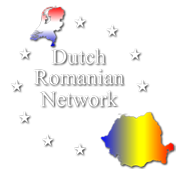Newsletter December 2023

Oceans of Possibilities – Networking meeting Damen & DRN
On Nov. 23, the DRN organized a special networking meeting at Damen Shipyards in Gorinchem, obviously focusing on shipbuilding, which is also the most important sector of the Dutch manufacturing industry. Especially since the Dutch government has focused on the maritime sector as part of its active industrial policy.

At the same time, this is under intense pressure from state interference in other countries and unfair competition. As a result, there is often no level playing field, even though there are many opportunities right now because many ships worldwide are due for replacement in the near future. That is why this plan was urgently needed, the business organizations said. How the uneven playing field relates due to state interference in European countries to European competition law is an open question, and in addition, of course, it does not apply in other continents.
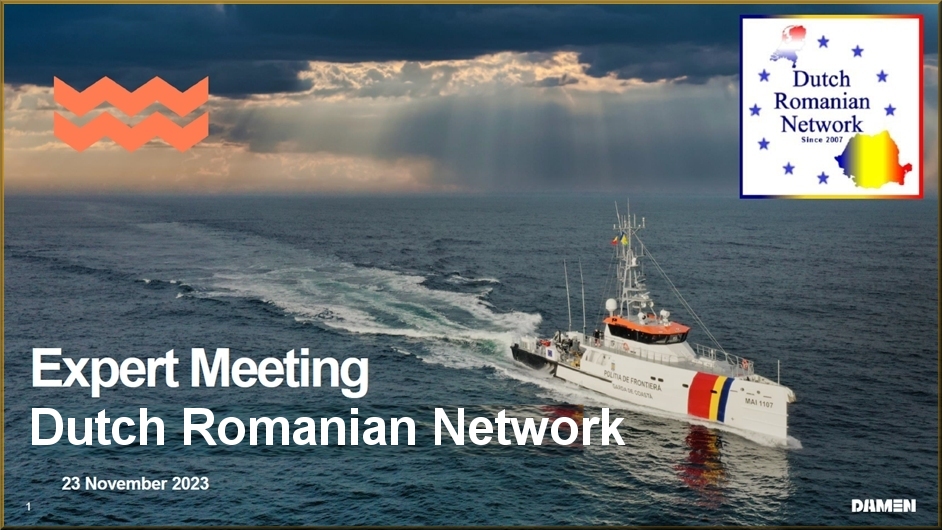
Dutch suppliers also face the uneven playing field. As is well known, Damen also has significant interests in Romania, and of course the DRN closely follows the interests of Dutch business. See also elsewhere in this newsletter.
Romanian diaspora celebrates worldwide his/her National Day
When is Grand Union Day?
This holiday is always celebrated on December 1. In Romanian, it is known as “Ziua Marii Uniri” and may also be known as Unification Day or 1918 Union Day.
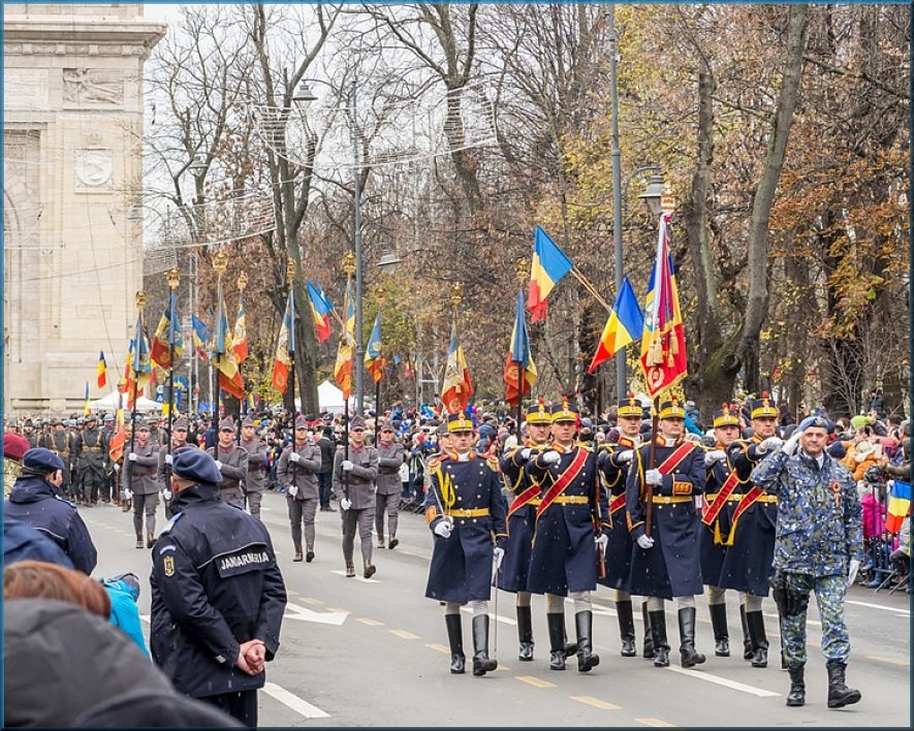
It is Romania’s national day and celebrates the Union of Transylvania with Romania in 1918.
History of the Great Union Day
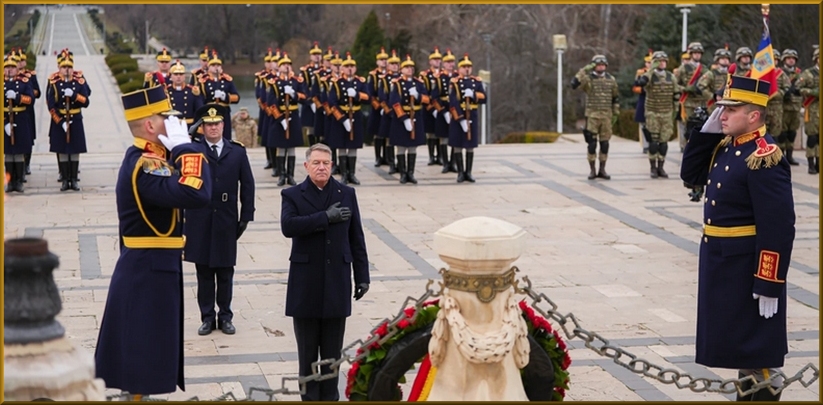
Romania had declared independence from the Ottoman Empire in 1877, with the country consisting of the principalities of Moldova and Wallachia.
After the end of World War I, during the reign of King Ferdinand I, Romania nearly doubled in size when Transylvania and the provinces of Bessarabia and Bukovina united with Romania.
The declaration of unification took place in Alba Iulia on Dec. 1, 1918. The statement was read by Vasile Goldis, a Romanian academic and politician, at a public event attended by more than 100,000 Romanians.
During World War II, Romania lost Basarabia (present-day Moldova) and Bukovina in 1940, with both regions annexed by the Soviet Republic.
Romania’s national holiday has been moved a few times over the years. Prior to 1918, May 10 was the national holiday that marked both Carol I’s entry into Romania in 1866 and his subsequent declaration of independence from the Ottoman Empire in 1877. During the period of communist rule beginning in 1944, the national holiday became Aug. 23, which marked the overthrow of the fascist government in 1944. After the end of communist rule in 1990, Dec. 1 was declared a national holiday.
How is Grand Union Day celebrated?
Great Union Day is marked by a large military parade in the capital Bucharest. Speeches will be held in Bucharest and Alba Iulia, where the union’s statement was first read out. Elsewhere, local events will commemorate Romanians who died during World War I.
Every year
Every year we wish each other atmospheric days and in good health and those wishes are also heartfelt!
We hardly dare utter the word peace out loud anymore.

Yet we must continue to hope that people will be more understanding of each other and act accordingly and not think that it is always the other person’s fault. Let us – even if it is against the odds – make a start on it these days. How long has it been since you lit a candle and silently thought of someone special to you?
We wish you happy days that make you feel good!

Sector (international) education & labor mobility
Post Craiova – Yes, We Can Mentality
Some time ago I reported in this blog about Camelia: the daughter of our good friends from Craiova who is studying literature in Groningen. Whereas she has now taken the next step in her international student career, the Netherlands seems to be heading toward a time when the internationalization of higher education is stalled and the arrival of foreign students is drastically curtailed. As far as I am concerned, this is unfortunate and rather short-sighted. Because we still need all those young, motivated and talented people hard enough.

Labor market shortages are still commonplace in the Netherlands. And if you ask me, permanently in certain sectors as well. Migrant workers are an important part of the solution to meet these shortages in the long term. Especially in the knowledge sector, such as in the Eindhoven region. The highly skilled migrant workers who work here have a huge impact on the functioning of businesses, on progress and innovation. As such, they represent a great economic value to the Netherlands.
An anecdote that I regularly relate is about a Quality Assurance Engineer of Polish origin from one of our clients. He lived and worked in the Netherlands for eight years before moving to Norway. There he traveled for the academic career of his American wife, whom he met in the Netherlands where she was then studying. Are you still following it? I think it is a great example of how internationalization enables labor mobility. This allows talented and driven employees to continue to develop and contribute positively to an organization and the economy in Europe.
 Unfortunately, this is too often ignored in public discussion, in my view. In that, no one seems to be waiting for migrants. There is particular grumbling about the pressure on social services and problems in the housing market. Without shortchanging these problems, I miss an optimistic perspective. Solutions are set aside for very basic reasons. Where is the will to face challenges? While there is much to be said for this as well, a little more “yes we can” mentality would help us move forward.
Unfortunately, this is too often ignored in public discussion, in my view. In that, no one seems to be waiting for migrants. There is particular grumbling about the pressure on social services and problems in the housing market. Without shortchanging these problems, I miss an optimistic perspective. Solutions are set aside for very basic reasons. Where is the will to face challenges? While there is much to be said for this as well, a little more “yes we can” mentality would help us move forward.
What fixed-thinking can mean in the short term can be seen now in Denmark, for example. Recently, a major Dutch newspaper headlined that after years of restriction, the Danes actually want to attract more international students again. This radical turn stems from necessity; there is an acute shortage of labor – particularly young labor – in certain sectors. Just like in the Netherlands.
Back to our Camelia. She is now doing an internship in Brussels, as a French translator. Her mother drove more than four thousand kilometers from Craiova to move her daughter from Groningen to her new home. A huge undertaking, symbolizing the sacrifices people make to give their children a better quality of education and better opportunities in life. Because they know it contributes to prosperity now and later. Whereas internationalization of education is mostly seen as a problem, you can frame it with the same ease as a decisive success factor for the future of Dutch society.
Sector Infrastructure
Study: companies in Galati have surpassed those in Constanța and are approaching the 10 billion lei threshold
The 60 largest companies in the Southeast region (the first 10 companies from the provinces of Constanța, Brăila, Buzău, Galați, Tulcea and Vrancea) generated a turnover of 28 billion lei in 2022, a 32% increase compared to the year 2021, when they registered 21.2 billion lei.
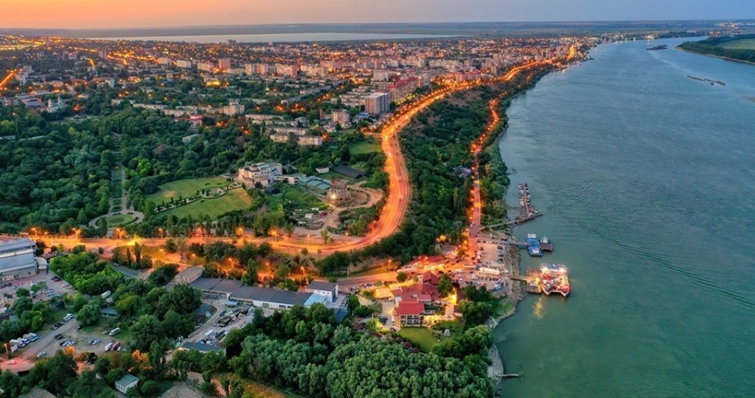
Currently, 324 entrepreneurial companies from the Southeast region have export activities and 211 companies have sales exceeding 10 million euros, according to the ScaleOut 4×10 survey conducted by the Romanian Business Leaders Foundation (RBL) and ING Bank Romania.
- Galati district ranks first in terms of total revenue of the ten largest entrepreneurial companies, with 8.75 billion lei by 2022.
- Galați district is home to, 61 to be exact, but also the most entrepreneurial companies with a turnover of over 10 million euros in export activities, 87 respectively.
- In terms of revenue growth for the ten largest entrepreneurial companies, the Brăila district recorded the most visible increase: 87.7%, from 1.69 billion lei in 2021 to 3.18 billion lei in 2022.
District of Constanta
The total turnover of the ten largest entrepreneurial companies in Constanța County increased by 50%, from 3.5 billion lei in 2021 to 5.25 billion lei in 2022. Maritime industry, transportation and agriculture are the areas in which the largest entrepreneurial companies operate in Constanța County.
According to the ScaleOut survey, a total of 55 entrepreneurial companies from Constanța County recorded a turnover of more than 10 million euros.
Galati district
The total turnover of the 10 largest entrepreneurial companies in Galati County increased by 17.4%, from 7.45 billion lei in 2021 to 8.75 billion lei in 2022. DIY retailing, pipe and steel profile manufacturing, as well as structures, represent the areas from which the largest entrepreneurial companies in Galati district originate.
Currently, 61 companies founded by entrepreneurs have sales of over 10 million euros.
Romania gets new port on Black Sea
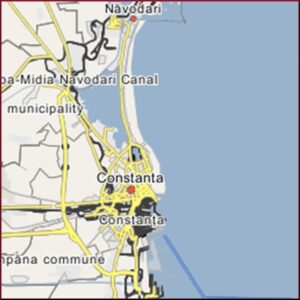 It will be built on the banks of the Poarta Albă-Midia Năvodari Canal The new port will have an area of 33,000 square meters.
It will be built on the banks of the Poarta Albă-Midia Năvodari Canal The new port will have an area of 33,000 square meters.
After the port of Constanța has become a real hell for carriers for the past almost two years, a new port will be built since the outbreak of war in Ukraine. It will be located on the banks of the Poarta Albă-Midia Năvodari Canal and will facilitate the docking and unloading of ships carrying goods. Currently, it spends days in customs to pass inspection. Workers have already arrived in the area and started work. They will construct access roads, a 21,000-square-meter operating platform, as well as three moorings of 120 square meters each. Specialists say such a port was needed because in recent years there has been high demand for those in Constanța, and the TIRs carrying various goods, especially grains, stand in endless lines for days. 25 km from Ovidiu, on the same canal, another port, called Luminița, is being rehabilitated to increase the volume of goods transported by inland waterways. This will relieve the port of Constanța from the pressure it currently experiences. The two projects cost more than 200 million lei and are funded by the EU.
Agricultural sector – horticulture
European Horticultural Congress 2024 in Romania
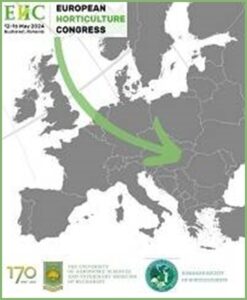 If horticulture is constantly on your mind, in your heart and actually in your genes, we may have some interesting news for you. We are pleased to introduce you to the European Horticulture Congress (EHC), 2024 edition.
If horticulture is constantly on your mind, in your heart and actually in your genes, we may have some interesting news for you. We are pleased to introduce you to the European Horticulture Congress (EHC), 2024 edition.
Under the auspices of the International Society for Horticultural Science (ISHS), the 2024 edition of EHC – “European Horticulture at Crossroads” will be organized in Bucharest, Romania, from May 12 to 16.
This is the fifth edition of EHC, an event held every four years (formerly known as the “Symposium of Horticulture in Europe”).
The hosts of 2024, namely the University of Agronomic Sciences and Veterinary Medicine of Bucharest and the Romanian Association of Horticulturists, have chosen the impressive Parliament Palace and International Congress Center as their venue.
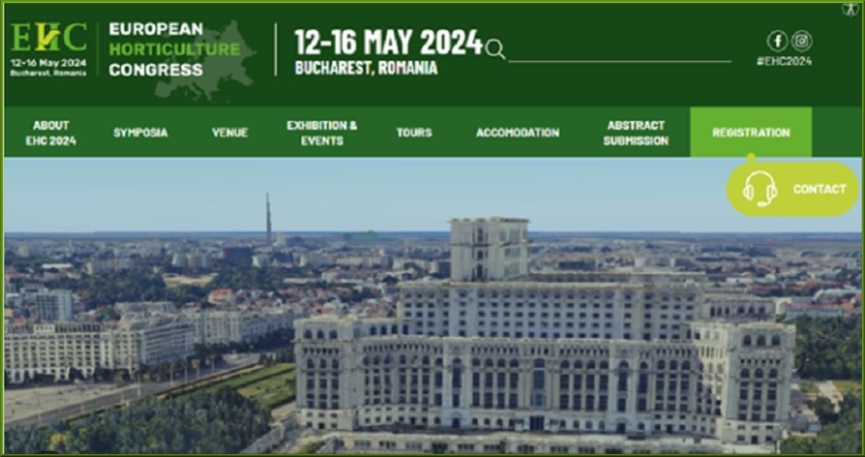
Even more impressive is the event’s program:
– 10 symposia – a horticultural exhibition
– technical tours and post-event tours Within the ten symposia of the congress, science and innovation will meet industry and nature in an open dialogue on why, when and how we can and should work together for the sustainable development of European and global horticulture of European and global horticulture.
The conference aims to find answers to three main questions:
What is the true state of horticulture, regionally and globally?
What are the challenges to achieving full sustainability?
What does society expect from horticulture in the 21st century?
The themes of the symposia are varied:
1. History of horticulture in Europe.
2. Sustainable vegetable production, from seed to health-promoting sources
3. Fruit production systems for sustainable and resilient development.
4. Viticulture and winemaking between tradition and innovation
5. Berries in Europe between opportunities and challenges
6. Floriculture at the service of European society
7. Urban horticulture: from vertical farming to planting design
8. Genetic resources in horticulture: screening, propagation, use and conservation
9. Robotics, mechanization and smart horticulture
10. Quality of postharvest and horticultural products.
If you would like to present a scientific/research paper or simply promote your company at the event (and be present at the accompanying expo), please feel free to contact the organizers. Learn more at: https://ehc.usamv.ro/wp-content/uploads/2023/03/EHC-2024-GENERAL__compressed.pdf. Info about registration as an exhibitor. Info about registration as a congress participant.

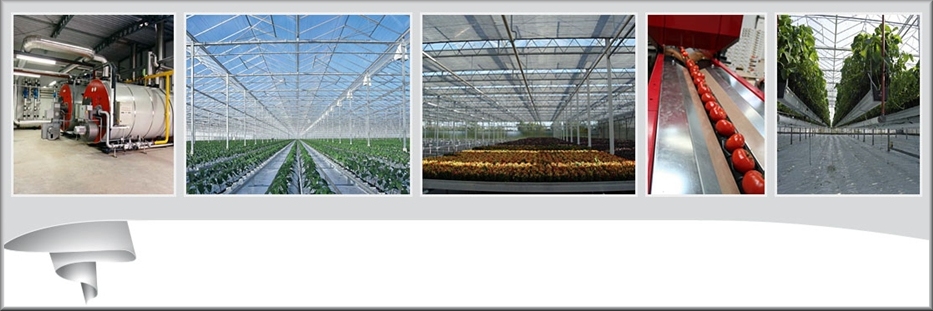
The Holland House of Horticulture group brings together 7 Dutch companies, all active in the international business segment dedicated to horticulture. All this is coordinated by Agriprogress.Their mission is to support the sustainable development of horticulture in Romania with respect and using the specific character and qualities of this country. We believe horticulture has great potential.
Holland House of Horticulture can support you:
– In the development and construction of a new greenhouse (from concept to operation)
– In improving already existing activities in the horticultural activity
– Providing knowledge, greenhouses, screen installations, climate control, automation, cultivation system in ditches, substrate, sorting and packaging systems
The following Dutch companies are already part of the Holland House of Horticulture group:
VB Greenhouses
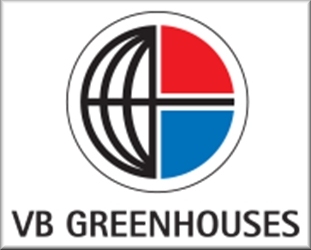
VB Greenhouses is part of the VB Group, which brings together a wide range of specialties for the agricultural sector. VB Greenhouses has designed and constructed a large number of greenhouses around the world, ranging in size from a few thousand square meters to over thirty acres.As the size of greenhouses has increased, the perspective on various projects has also changed. The construction period can be very short. This requires experienced and intensive project management. www.vb-group.nl
Metazet Formflex
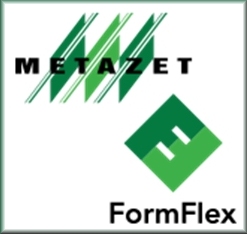
Metazet Formflex is a well-known company in the horticultural industry. For more than 35 years, we have provided our products, systems and services to our customers around the world. Metazet develops and manufactures metal items such as suspenders and supports for the horticultural industry worldwide. Our complete lifting systems, cultivation systems and logistics solutions can also be found all over the world. FormFex is the world specialist in the design and production of gutter systems for horticulture. www.metazet.com
VB Climate

VB Climate is part of the VB Group, which brings together a diverse range of specialties for the agricultural sector. Based on its vast experience and knowledge of all applicable modern technologies, VB Climate is the right company to provide a complete package for heating and cooling systems.
Full knowledge of both cultivation and engineering comes together to create innovative solutions. As a pioneer in renewable technologies, VB Climate is fully conversant with the use of alternative energy sources. www.vb-climate.com
Agro-energy
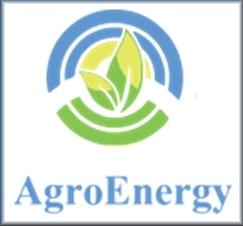
For over 20 years, Agroenergy’s team has been providing solutions in horticulture, in the field of greenhouse construction, including heating and cooling, shading systems, irrigation equipment, horticultural materials, coconut substrate, fertilizers, vegetable seeds, machinery assorted fruits and vegetables.
This company has always represented the leaders of Dutch horticulture and, through innovations and constant advice to its customers, has tried to offer them the most complete service possible over many years. www.agroenergytrading.ro
Van der Windt
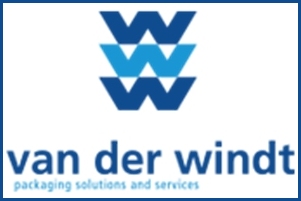
Van der Windt Verpakking is part of the Paardekooper Van der Windt Group and has branches in the Netherlands, Belgium, England and Ireland. We develop, produce and distribute a wide range of disposable packaging. Our range includes approximately 15,000 items destined for the agriculture and horticulture (ornamental) sector, retail and service segments such as hospitality, cleaning and health. www.vanderwindt.com
Luiten
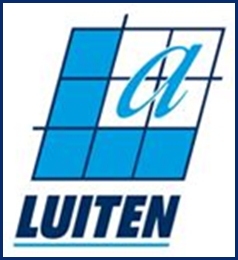
Luiten Greenhouses BV offers advice and supplies/assembles a wide variety of awning/cover installations for horticultural professionals worldwide.Our goal is to serve the international market for greenhouses and garden centers. The corporate culture of Luiten Greenhouses BV is open, flexible, reliable and client-oriented Luiten Greenhouses BV is part of the Luiten Group, a dynamic and versatile group of companies, based in De Lier, Westland-Netherlands, the most concentrated and innovative horticultural sector area of the world. www.luiten-greenhouses.com
PB Engineering
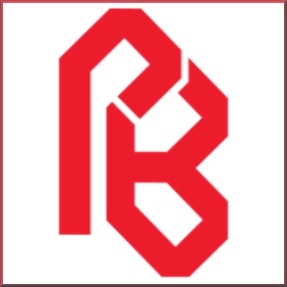
PB Techniek provides technological solutions and automation for electrical and irrigation systems aimed at the international horticultural sector. We have over 25 years of experience in a wide variety of projects. As an independent company, we are able to work decisively and respond rapidly to market innovations, which is fully recognized by our customers: growers of vegetables, flowers and potted plants at home and abroad. With approximately 40 employees, we have the capacity to independently manage large-scale projects. www.pb-techniek.nl
Aweta
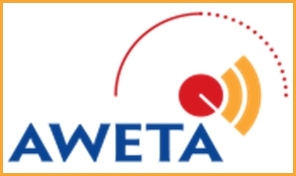
Founded in 1966 in the Netherlands, Aweta designs and manufactures packaging and sorting systems for fruits, vegetables and flowers. We started in the Netherlands in 1966 and produced a system of packing fruits, legumes and flowers. Combine innovation with experiencing a service center in a place where you can make a lot of money by finding a place where you can use automatic equipment for sorting. www.aweta.nl
Van der Knaap
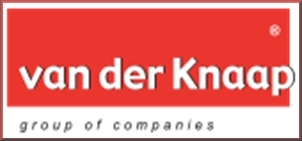
Van der Knaap is a group of companies specializing in the development of the best quality biological solutions for rooting and growing plants. Van der Knaap Groep’s rooting and cultivation products are based on recyclable and therefore environmentally friendly materials, such as coconut substrate and peat moss. From improvements to potting soil mixes and substrates to entirely new products: Van der Knaap has the best solution for virtually every crop and every stage of the growing process. www.vanderknaap.eu
Romanian broiler producer certified as “Better Life”
The Safir Group is the only slow broiler producer in Romania to hold the Beter Leven 1* Animal Welfare Certificate for the entire production chain: at the parent farms where the eggs come from, at the hatchery, at the broiler rearing farms, at the site feed mill and at the slaughterhouse.
This unique concept in Romania of slow growing chickens sets Safir Group apart from other producers on the market. “In Romania, we have the only Better Life 1*-certified slow-growing chicken, which retains the natural color of the chicken meat,” said George Safir, general manager of the Safir Group.
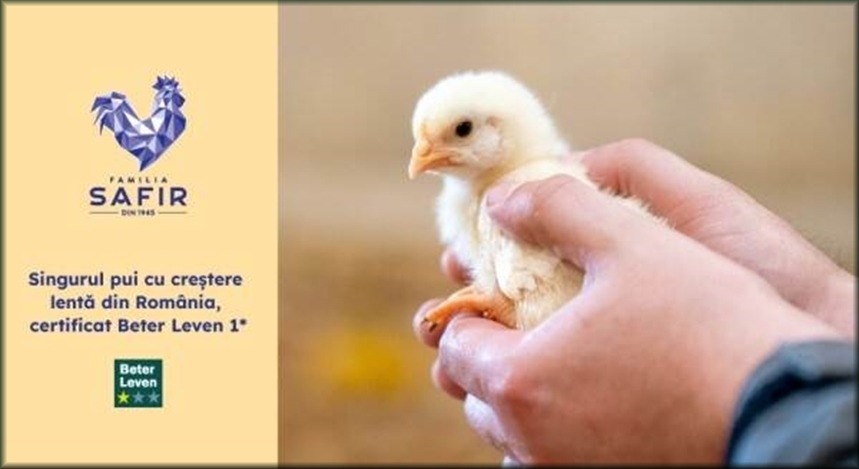
The color of the meat is natural pink-white due to the absence of feed coloring and the premium non-genetically modified breed. Slow-growing chicken farms meet the Beter Leven 1* quality mark of animal welfare. On these farms, located close to the forest, the slow-growing chickens are provided with all the conditions for the development of their natural instincts: they have outdoor runs in the pasture and straw bales to play in, natural light in the barn and sleep on chopped straw bedding. They are raised by rural residents and fed by hand daily in the traditional manner. The contribution to meat quality is also ensured by reducing stress in the birds, through gentle behavior during daily hand feeding. Protection from heat stress and clean air increase meat quality and contribute to a better life.
Compliance with European standards, quality norms and products has enabled Safir Group to develop and consolidate partnerships both within the European Union and beyond.
The project that will make Romania a world leader in the wool market
 Romania is about to become one of the main players in the global market of products made from sheep’s wool. A huge wool processing plant will soon be built in the Olt district, which will collect raw materials from all the sheep in Romania. In the Agricultural Marathon scheduled last October 25, relevant players from the profile markets in Romania, government representatives, farmers, experts on technologies for agriculture, the major players in the retail and in the food sector came together.
Romania is about to become one of the main players in the global market of products made from sheep’s wool. A huge wool processing plant will soon be built in the Olt district, which will collect raw materials from all the sheep in Romania. In the Agricultural Marathon scheduled last October 25, relevant players from the profile markets in Romania, government representatives, farmers, experts on technologies for agriculture, the major players in the retail and in the food sector came together.
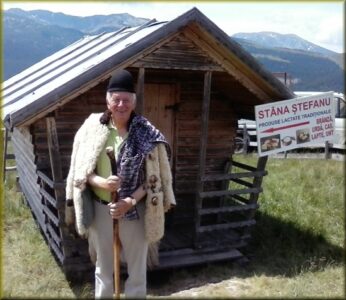 Initiator of the project is Cristian Mercioniu, CEO of Eco Friendsheep SRL “The project is designed to solve a systemic problem, a problem that has not been solved for 30 years, because there was no closure of the chain from wool production to the final product. Before the Revolution, there was a very large wool processing industry. (…) Many people ask me why wool is no longer used, and my question is why glass is no longer used. Both disappeared around the same time, as polyester and plastic joined them. (…) Probably few people know that after washing, 40-50% of a kilogram of raw wool remains, so the loss is great, while from a ton of polyester you produce a ton of finished product. We came to the conclusion that it is necessary and possible to make a project that includes the entire amount of wool produced in Romania, because the need for insulation with sheep’s wool is very high. (…)
Initiator of the project is Cristian Mercioniu, CEO of Eco Friendsheep SRL “The project is designed to solve a systemic problem, a problem that has not been solved for 30 years, because there was no closure of the chain from wool production to the final product. Before the Revolution, there was a very large wool processing industry. (…) Many people ask me why wool is no longer used, and my question is why glass is no longer used. Both disappeared around the same time, as polyester and plastic joined them. (…) Probably few people know that after washing, 40-50% of a kilogram of raw wool remains, so the loss is great, while from a ton of polyester you produce a ton of finished product. We came to the conclusion that it is necessary and possible to make a project that includes the entire amount of wool produced in Romania, because the need for insulation with sheep’s wool is very high. (…)
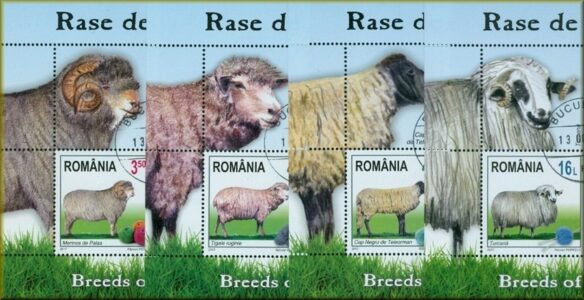 The project of the new plant consists of different production lines and different products derived from wool. In addition to insulation, we are going to make pellets for agriculture, 100% organic manure, from all residues and waste from processing,” Cristian Mercioniu said on the show “Agricultura la Raport.” According to the entrepreneur, the plant will be built through a state aid scheme of the Ministry of Economy and the total investment is 35 million euros. The project is expected to create more than 200 permanent jobs and 1,000 seasonal jobs. “This is a project under a state aid scheme of the Ministry of Economy, and the total value including VAT is 35 million euros.
The project of the new plant consists of different production lines and different products derived from wool. In addition to insulation, we are going to make pellets for agriculture, 100% organic manure, from all residues and waste from processing,” Cristian Mercioniu said on the show “Agricultura la Raport.” According to the entrepreneur, the plant will be built through a state aid scheme of the Ministry of Economy and the total investment is 35 million euros. The project is expected to create more than 200 permanent jobs and 1,000 seasonal jobs. “This is a project under a state aid scheme of the Ministry of Economy, and the total value including VAT is 35 million euros.
The production capacity is 25,000-30,000 tons of wool per year, which means we cover the entire wool production in Romania. Annually, in an average scenario, we pay at least 10 million euros in taxes and fees. (…) Romania becomes the European leader in wool processing and the world leader in the production of sheep wool insulation because there is no other plant with such capacity anywhere in the world. 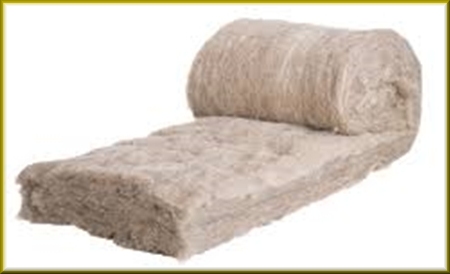 The project was submitted last year, Dec. 16 was the last day for submitting projects under the Economy Ministry’s scheme. It was tested on March 29, 2023, and as of April, when we were asked for all the additions and clarifications of the project, we were officially told that the project was approved for financing and will be called to sign the financing contract, an agreement that so far has not been signed. We are waiting for the contract to be signed and start implementation. Since the signing was delayed, we have moved with the start of the first production lines sometime in September next year,” Cristian Mercioniu told AGRO TV.
The project was submitted last year, Dec. 16 was the last day for submitting projects under the Economy Ministry’s scheme. It was tested on March 29, 2023, and as of April, when we were asked for all the additions and clarifications of the project, we were officially told that the project was approved for financing and will be called to sign the financing contract, an agreement that so far has not been signed. We are waiting for the contract to be signed and start implementation. Since the signing was delayed, we have moved with the start of the first production lines sometime in September next year,” Cristian Mercioniu told AGRO TV.
An ancient tradition the Transhumance – the seasonal movement of sheep – is still practiced in Romania. But shepherds (pictured) say a law limiting the number of sheepdogs they can use could threaten their way of life.
Short-Term Outlook Agricultural Markets in 2023 and 2024
A first global look shows that EU farmers are maintaining production despite unfavorable weather conditions.
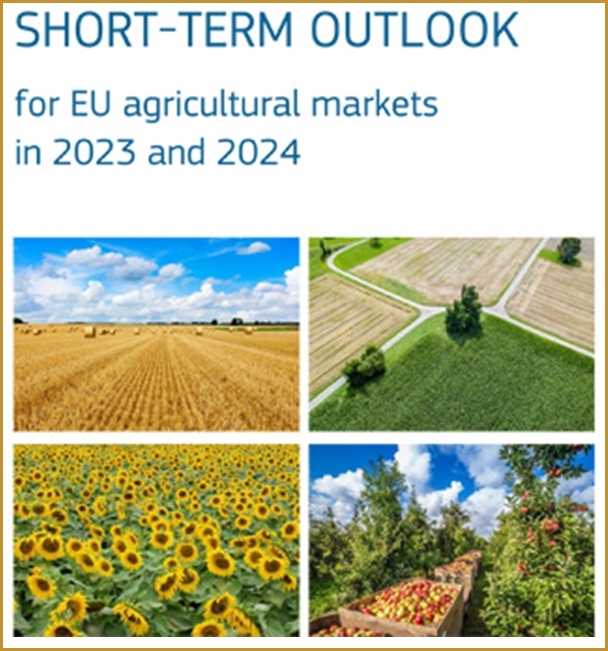
Competitiveness recovers
Hot and dry weather, coupled with excess rainfall in several parts of Europe in the summer of 2023, continued to test farmers’ resilience. Yields of various arable and specialty crops were affected, harvests were delayed, diseases and pests developed, and the quality of some products also suffered. At the same time, there are signs of positive market prospects for the EU agricultural sector. The cost of inputs, such as energy, fertilizers and feed, continued to decline. EU exports of agri-food products have regained some competitiveness, confirming the EU’s position as the world’s largest exporter. The autumn 2023 edition of the short-term outlook report for EU agricultural markets, published today by the European Commission, presents the latest trends and outlook for agricultural markets.
Food inflation
Monthly food inflation in the EU began to decline since July. While food prices still remain a major problem for consumers, this could alleviate some of the demand for certain products. Overall, food inflation accounts for nearly 40% of price increases at the consumer level. Wine is one of the products whose consumption declined due to higher prices, coupled with a structural decline in the consumption of red wines. Crisis distillation, approved by the European Commission this summer, helps stabilize the market.
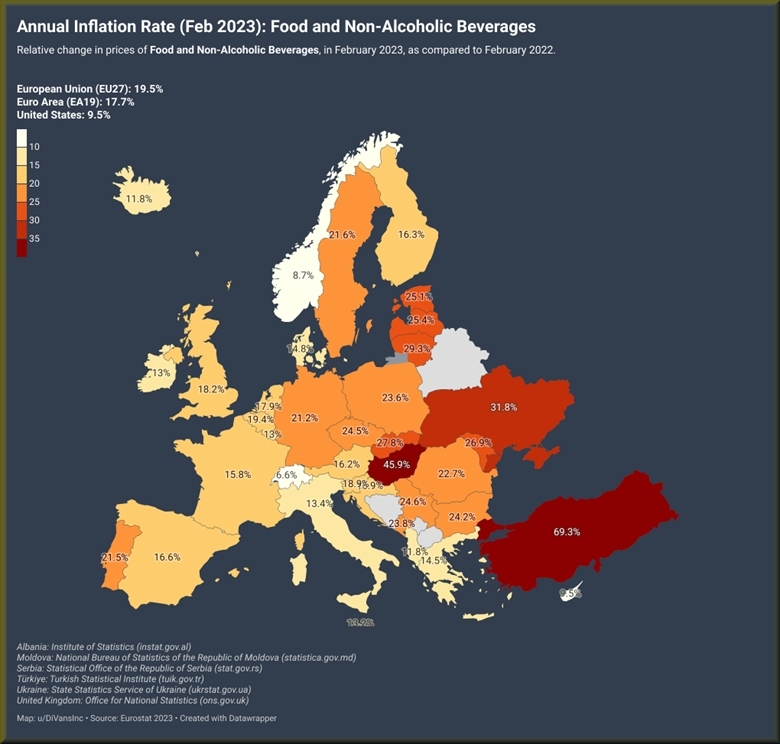
Meat is also negatively affected by a drop in consumption due to high prices. Improved pasture conditions and lower feed costs provided some relief for livestock producers. However, meat production, excluding poultry, could remain below average.
Rising EU nitrogen fertilizer prices prevented a general shortage and uncontrolled lower use of fertilizers by EU farmers. The Commission is closely monitoring the fertilizer market and launched the EU Fertilisers’ Market Observatory in July 2023.
Arable crops
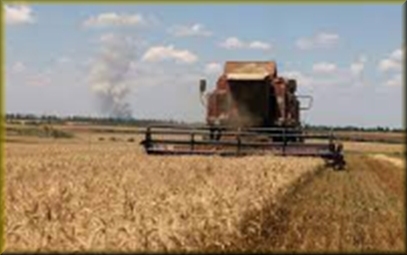 EU cereal production for 2023/2024 is expected to be 4.3% below the five-year average, at 268.5 million tons, due to unfavorable weather conditions in the spring and summer that mainly affect corn and barley production. Feed use of grains could remain stable, while use of grains for biofuel production could continue to grow (12% over 2022/2023). The EU remains a net exporter of grains, especially wheat. In particular, exports to the Middle East and Sub-Saharan Africa have increased in recent months.
EU cereal production for 2023/2024 is expected to be 4.3% below the five-year average, at 268.5 million tons, due to unfavorable weather conditions in the spring and summer that mainly affect corn and barley production. Feed use of grains could remain stable, while use of grains for biofuel production could continue to grow (12% over 2022/2023). The EU remains a net exporter of grains, especially wheat. In particular, exports to the Middle East and Sub-Saharan Africa have increased in recent months.
EU oilseed production is doing particularly well (11% above the five-year average), thanks to a recovery in sunflower production and higher soybean production.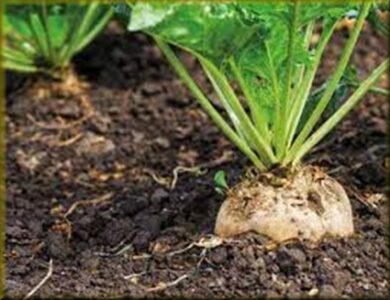
Although the complete ban on the use of neonicotinoids presents some challenges for sugar beet growers, planting areas, beet yields and sugar content are expected to increase compared to last year’s decline. EU sugar production in 2023/2024 is estimated at 15.6 million, close to a five-year average.
Specialized crops
Olive oil production will remain low and is not expected to fully recover in 2023/2024. Prices will remain high, resulting in lower exports and EU consumption. In some regions, prices are almost three times higher compared to the five-year average. Stable imports could to some extent support EU availability, which will nevertheless remain low.
 EU wine production is expected to fall by about 6% in 2023/2024, mainly due to a decline in Italian and Spanish production. Consumer demand, particularly for red wine, continues to decline. Consumers have lower purchasing power and are switching to other beverages, such as beer.
EU wine production is expected to fall by about 6% in 2023/2024, mainly due to a decline in Italian and Spanish production. Consumer demand, particularly for red wine, continues to decline. Consumers have lower purchasing power and are switching to other beverages, such as beer. 
Driven by unfavorable weather conditions, apple and orange production will show a similar downward trend, with about 2% less compared to last year. More fruit is also likely to be used for processing because of lower quality and higher storage costs.
Milk and dairy products
EU milk supply remains fairly stable and is expected to increase by 0.3% in 2023. EU raw milk prices have fallen since the beginning of the year. Although energy, fertilizer and feed costs are slowly beginning to fall, they remain high, leading to tight margins for EU dairy farmers.
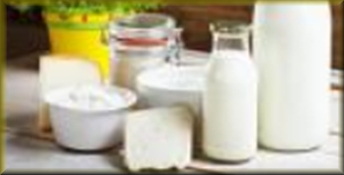 Cheese production in 2023 is expected to be 1% higher than last year. Lowering food inflation in the EU is also likely to have a positive impact on domestic consumption (+0.2%). Above expectations, production of fresh dairy products is increasing (cream and drinking milk). Because EU exports are unlikely to grow due to declining demand in China, additional volumes are likely to be consumed domestically, demonstrating greater resistance to rising prices than other products of animal origin.
Cheese production in 2023 is expected to be 1% higher than last year. Lowering food inflation in the EU is also likely to have a positive impact on domestic consumption (+0.2%). Above expectations, production of fresh dairy products is increasing (cream and drinking milk). Because EU exports are unlikely to grow due to declining demand in China, additional volumes are likely to be consumed domestically, demonstrating greater resistance to rising prices than other products of animal origin.
Meat Products
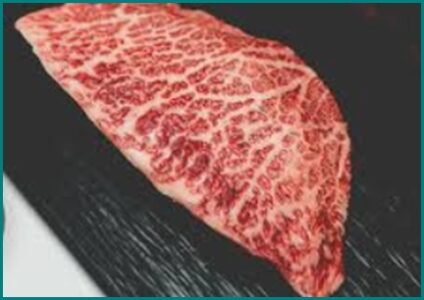 Europeans will continue to eat less meat. Overall, per capita meat consumption in the EU is expected to decrease by 1.5% in 2023 due to price inflation and lower market supply. The decline is stronger for beef consumption (-3.5%) and pork (-5.2%), while poultry consumption will grow by 4.3%.
Europeans will continue to eat less meat. Overall, per capita meat consumption in the EU is expected to decrease by 1.5% in 2023 due to price inflation and lower market supply. The decline is stronger for beef consumption (-3.5%) and pork (-5.2%), while poultry consumption will grow by 4.3%.
Beef and poultry prices remain high due to lower supply. Backed by restored production, poultry remains one of the cheapest sources of animal protein for consumers.
EU sheep meat production is expected to suffer from a structurally declining sheep herd, lower grass availability, especially in Mediterranean countries, higher feed costs and the outbreak of sheep pox in certain countries.
NB
Updated balances for the 2023/2024 sales year are included in the latest short-term report and are also available on the agrifood data portal.
General Publications October 9, 2023 Report: Short-term outlook for EU agricultural markets – autumn 2023. These short-term outlooks for agricultural markets are published three times a year and are based on the latest data and information from market experts at the European Commission.
Economic analysis Romanian agricultural sector
Romanian Raiffeisen Bank’s chief economist Ionut Dumitru explained some of the reasons why we are where we are. ‘What is clear to me as an economist is that Romania has very large resources in agriculture. We are a country with enormous agricultural potential. At the European level, we are in the top 5 in terms of building area, after France, Spain, Germany and Poland. From the perspective of our size as an agricultural player, we should be a very big player at the European level.

Agriculture also plays a very important social role in Romania. We also have a population that is quite rural and engaged in agriculture. The population employed in agriculture is about 21.8% of the total, but the gross value added of agriculture is only 3.8% of GDP. It’s a lot. The European average is 4.6%,” Dumitru said.
What else did the Romanian economist add regarding our agriculture and animal husbandry
- When 20% of the working population produces only 4% of your GDP, it means that we have great inefficiency in terms of labor utilization in agriculture. At the same time, we have the problem of subsistence farming. If we look at the numbers, we see that about 87 percent of the population engaged in agriculture are so-called “self-employed,” and most are doing what we call subsistence farming.
- If we look at the size of farms, the average farm size in Romania is 3.7 hectares, which is ridiculous because there is no way you can do efficient farming on an area of 3.7 hectares. At the other extreme we have the Czech Republic, where the size of the farm is 130 hectares. Our Bulgarian neighbors average 22 acres and have a very high fusion rate. In our country, the merger takes place much more slowly.
- We have many subsistence farms. We have more than 86% of farms that consume more than 50% of what they produce (meaning that these farms produce more for their own consumption) and at the same time we have one of the highest shares in Europe of farms where the manager is over 65. We have aging farm managers and, of course, that also has major implications.
- If we look at the education of those who farm or the proportion of those who say they learn a trade at work or those who rely only on their own experience, Romania has the highest proportion. In our country, the majority – 90% – of those in agriculture rely on experience gained on the job.
- Livestock production places us at the bottom of the European rankings. We also have a big problem with animal husbandry. In terms of number of animals/farm, we are last in the EU. Even when it comes to the number of animals per hectare, we are doing poorly, and all of this is reflected in the balance of trade.
- Similarly, we have only 0.6% of European production for beef, 1.5% for pork, 3.4% for chicken and only 2.6% for milk. Why are these numbers important? Because they continue to show up on the trade balance. Looking at the trade balance, we have a large structural deficit in agri-food products, situated in a few major products: meat, vegetables, fruits and milk and dairy products.
Retail Sector
Ahold Delhaize makes €1.3 bln acquisition in Romania
Ahold Delhaize AD€28.31– acquires Romanian supermarket chain Profi for an enterprise value of €1.3 bln. The parent company of Albert Heijn thus more than doubles the number of Romanian branches: from nearly 1,000 to more than 2,700.
Ahold already owns the Mega Image supermarket chain in Romania.
Profi is one of the larger supermarket chains in Romania and achieved sales of €2.5bn in the last fiscal year, which ran until last June. By comparison, Ahold Delhaize’s sales in 2022 were €87 bln.
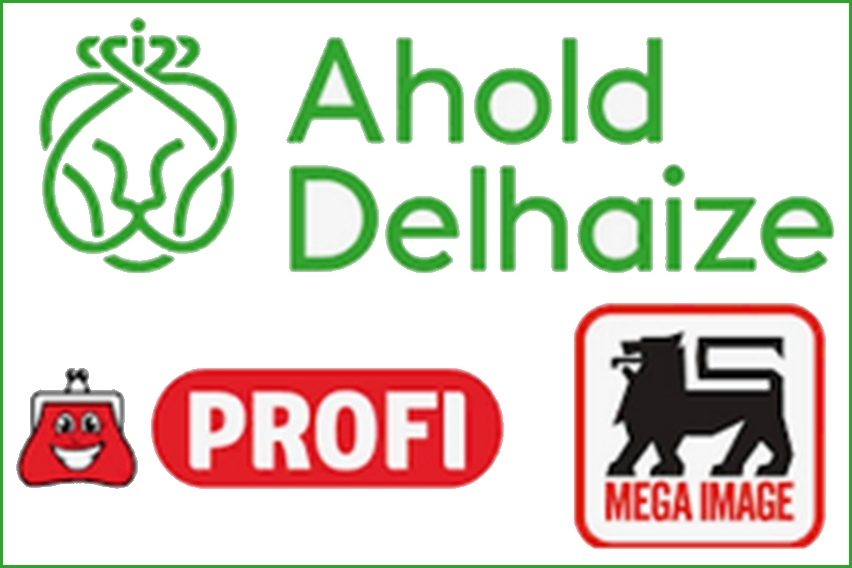
In a press release, the Zaandam-based supermarket group called Romania an attractive market, where prosperity and purchasing power are continuing to grow. Ahold hopes to boost profits there in addition to sales, partly through synergy benefits.
Profi’s enterprise value of €1.3bn still excludes lease obligations. Taken together, that amount would come to €1.8 bln. Ahold is expected to complete the acquisition during next year. The relevant regulators still need to give their approval. Further details on the acquisition will be provided by Ahold Delhaize at its quarterly earnings presentation on Nov. 8.
Profi was owned by MidEuropa Partners, a private equity firm based in the United Kingdom with multiple investments in Central and Eastern Europe. MidEuropa bought Profi in 2016 for over €500 mln from a Polish investment fund, at the time the largest acquisition in Romania by private equiy ever. Since its acquisition by MidEuropa, the number of branches grew substantially: from five hundred to over 1,600.
A few weeks ago, Romanian newspaper Ziarul Financiar reported that MidEuropa Partners had engaged investment bank Citi to seek a buyer for Profi. The private equity firm reportedly demanded €1 bln for the Romanian supermarket chain. French supermarket chains Carrefour and Auchan are also said to have expressed interest.
With the Profi acquisition, Ahold Delhaize becomes “the clear market leader” among supermarkets in Romania.Ahold Delhaize’s presence in Romania is due to the components Delhaize took with it when it merged with Ahold in 2016. The Belgian supermarket group bought Romania’s Mega Image at the beginning of this millennium, around the same time it expanded into Serbia and Greece. Ahold had a foothold in Central and Eastern Europe only in the Czech Republic.
Despite the new acquisition in Europe, Ahold Delhaize still leans on the U.S. market for most of its revenues. The retail group derives two-thirds of its sales from the country.
Sources consulted:Ziarul Financiar
Transport & Logistics Sector
Dexory a Romanian start-up installs first autonomous robot
Dexory, the logistics start-up founded by three Romanians in London, is installing the first autonomous robot to monitor merchandise inventories at Ikea’s regional warehouse. “Can scan in one day what used to take a year”
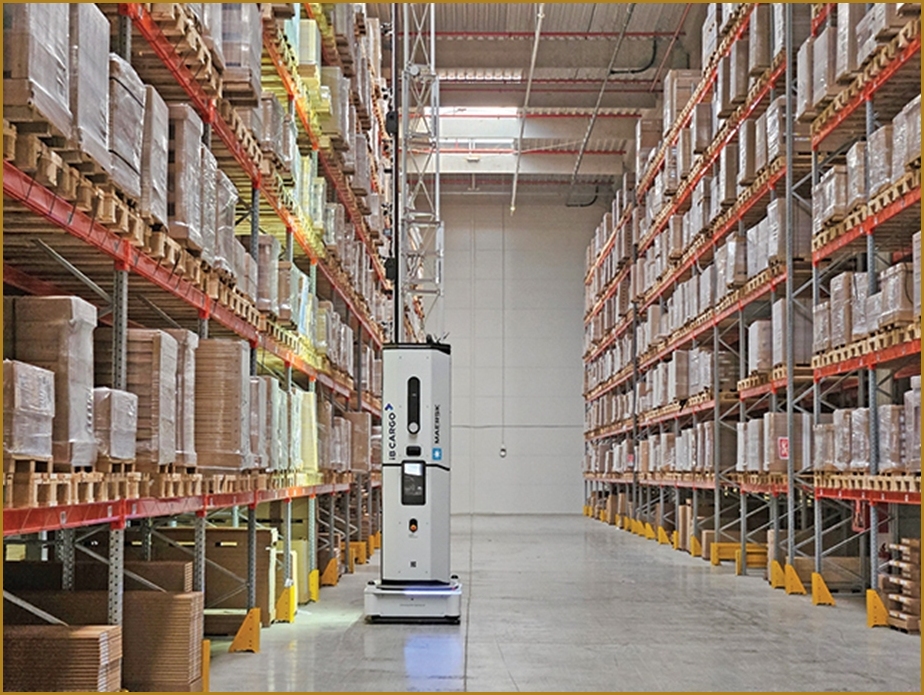
The NEO robot, developed by Dexory, operates daily at this logistics center in Bolintin-Deal(Giugu district) and scans more than 10,000 pallet locations per hour, compared to 150 locations per hour with current manual processes.
 Dexory, is a company founded in London in 2015 by three Romanians, Andrei Dănescu, Oana Jinga and Adrian
Dexory, is a company founded in London in 2015 by three Romanians, Andrei Dănescu, Oana Jinga and Adrian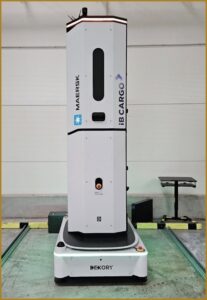 Negoiţă and headquartered in Britain, is working with the giant Maersk to digitize and robotize its warehouses.
Negoiţă and headquartered in Britain, is working with the giant Maersk to digitize and robotize its warehouses.
Romania is the first European country to implement the autonomous robot NEO, at the Maersk-IB Cargo warehouse of the CTPark Bucharest West project, and this is the third Maersk site in the world where such a robot developed by the three Romanians is operating.
The AP Moller – Maersk & IB Cargo warehouse opened in September 2021 with an area of 76,000 sq. ft. and expanded to 100,000 sq. ft. in less than 2 years. It offers customized logistics solutions and serves 8 countries in Europe and the Balkans. The unit is located in the CTPark Bucharest West industrial park. The warehouse employs 140 people 24 hours a day, 7 days a week.
KLG Europe opens new branch in Eersel
There is a saying in the Kempen region of Brabant that “Good work takes time,” and the KLG’ers can relate to that, but the result is worth it!
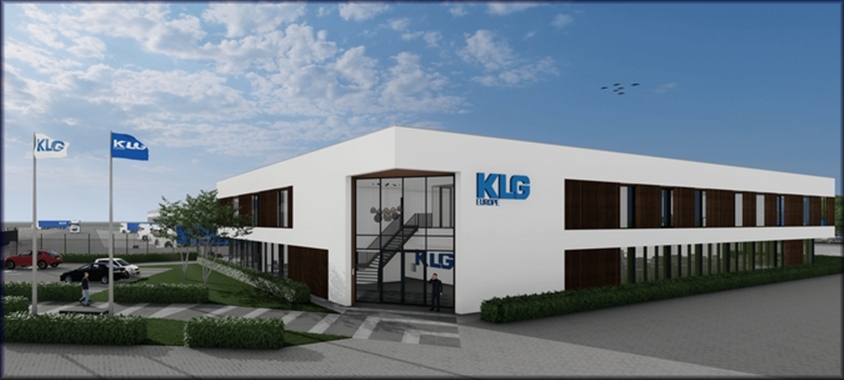
KLG Europe is the logistics service provider for every logistics demand worldwide. The Eersel branch is the market leader when it comes to groupage transport France. With 550 departures per week, its own modern fleet of vehicles and a covering French distribution network, KLG knows how to answer every logistics question. KLG handles all shipments, from groupage, LTL to FTL and from ADR shipments to wine transport within the shortest possible time. With a highly driven and experienced French-speaking logistics team and a focus on smart logistics solutions, KLG goes beyond a standard logistics solution for its customers.
In the area of employment, KLG managed to win both the title for Most Attractive Employer and the title for Best Training Company last year.
Johan Cuijten (KLG): ‘We have our own forest’
 Johan Cuijten, General Manager of KLG in Eersel, first briefly explains exactly what the logistics service provider does. “We focus on logistics services with warehousing and transport capabilities. If we look at our location in Eersel, our services are completely focused on France. We have our own fleet of vehicles at this location and also carry out cross-dock activities. “From France, KLG has traditionally transported mainly wines to Dutch retailers, but also many other goods. Cuijten: “Direction to France involves a variety of goods such as electronics, consumer goods and hazardous materials. So a very broad pallet of products.”
Johan Cuijten, General Manager of KLG in Eersel, first briefly explains exactly what the logistics service provider does. “We focus on logistics services with warehousing and transport capabilities. If we look at our location in Eersel, our services are completely focused on France. We have our own fleet of vehicles at this location and also carry out cross-dock activities. “From France, KLG has traditionally transported mainly wines to Dutch retailers, but also many other goods. Cuijten: “Direction to France involves a variety of goods such as electronics, consumer goods and hazardous materials. So a very broad pallet of products.”
Facilitating growth
“KLG Europe is growing rapidly, new premises were desperately needed,” Cuijten said. “The new building is on a plot a little further away, right up against the A67 which means you can quickly head towards France. Also in relation to the other main artery towards France, the A2 via Liege, this location is very convenient.
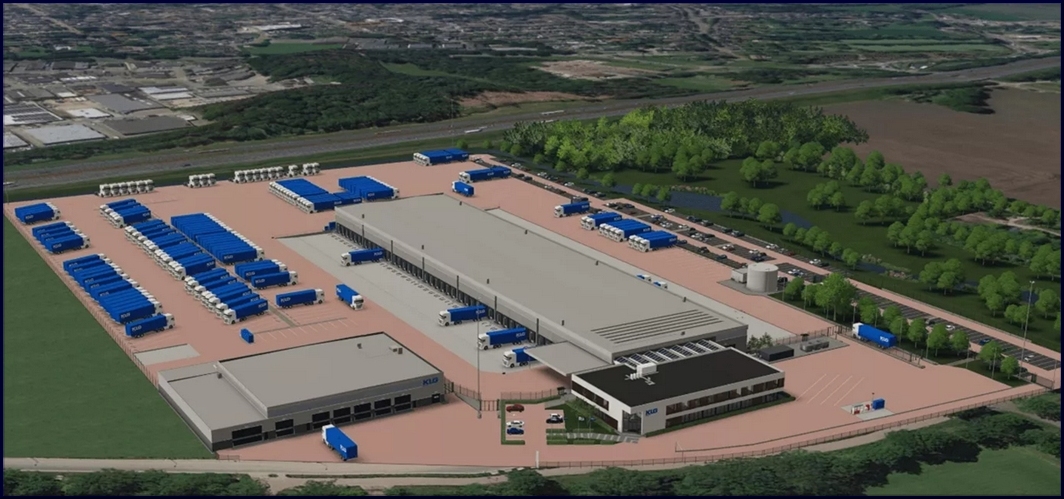
What else is incredibly important is that our employees come primarily from this corner of the country.
Family-owned E. van Wijk Logistics celebrates 75 Years of dedication, innovation and sustainability
GIESSEN – E. van Wijk, a leading international logistics service provider, is marking 75 years of courageous entrepreneurship and organic growth this year. This milestone is celebrated throughout the year with events such as a trucker tour of the region and school days to inspire the next generation of employees.
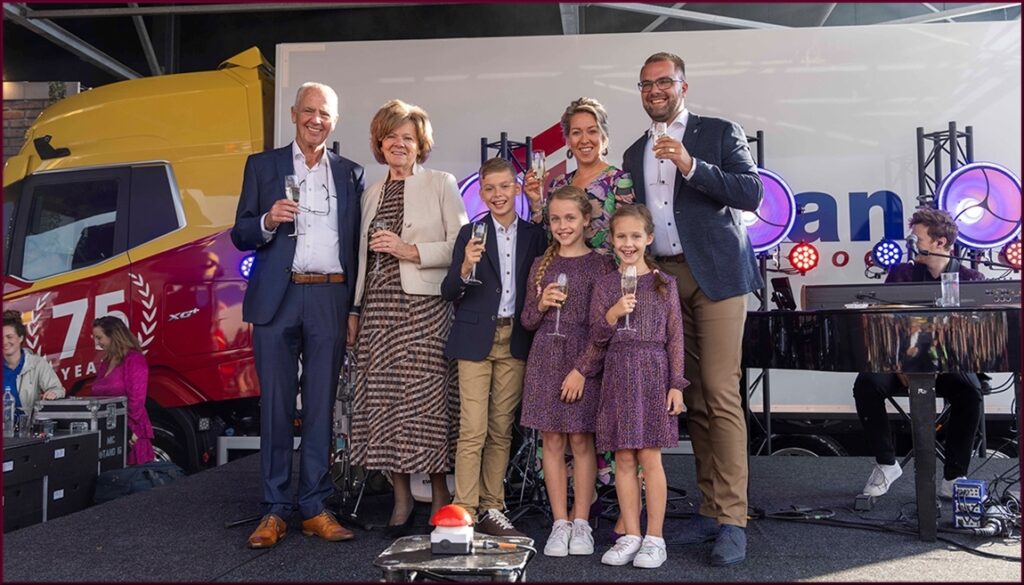
Highlight: the anniversary party held on Saturday, Sept. 23, for business associates, customers, employees and family during which the E. van Wijk grounds were transformed into a lively village with entertainment, culinary delights, an impressive fireworks show and the unveiling of the company’s first electric truck. An important step in making the fleet more sustainable.
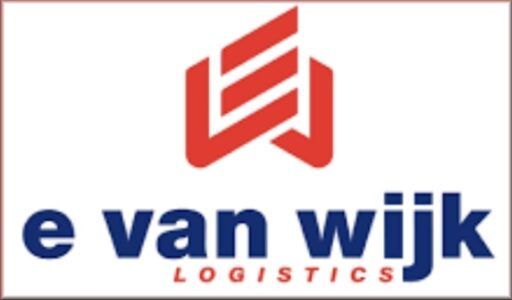
Royal Van Oord wins three new Romanian coastal protection projects
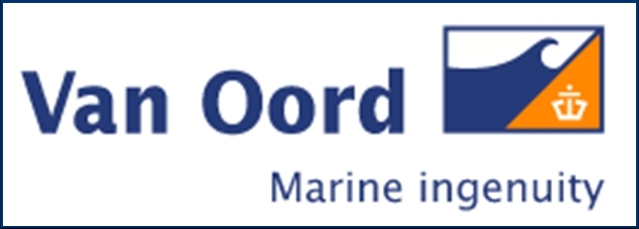 Rotterdam, Nov. 9, 2023 – Van Oord has won three new contracts to reinforce the Romanian coast, with a combined value of approximately EUR 200 million. This time, the Administratia Bazinala de Apa Dobrogea-Litoral (ABA-DL) has awarded Van Oord the contracts for the design and construction of a 6.7 km resilient coast at the Romanian seaside resorts of Costinesti, Mangalia-Saturnus and 2 Mai. Improving marine habitats through artificial reefs and biostructures is also part of the work.
Rotterdam, Nov. 9, 2023 – Van Oord has won three new contracts to reinforce the Romanian coast, with a combined value of approximately EUR 200 million. This time, the Administratia Bazinala de Apa Dobrogea-Litoral (ABA-DL) has awarded Van Oord the contracts for the design and construction of a 6.7 km resilient coast at the Romanian seaside resorts of Costinesti, Mangalia-Saturnus and 2 Mai. Improving marine habitats through artificial reefs and biostructures is also part of the work.
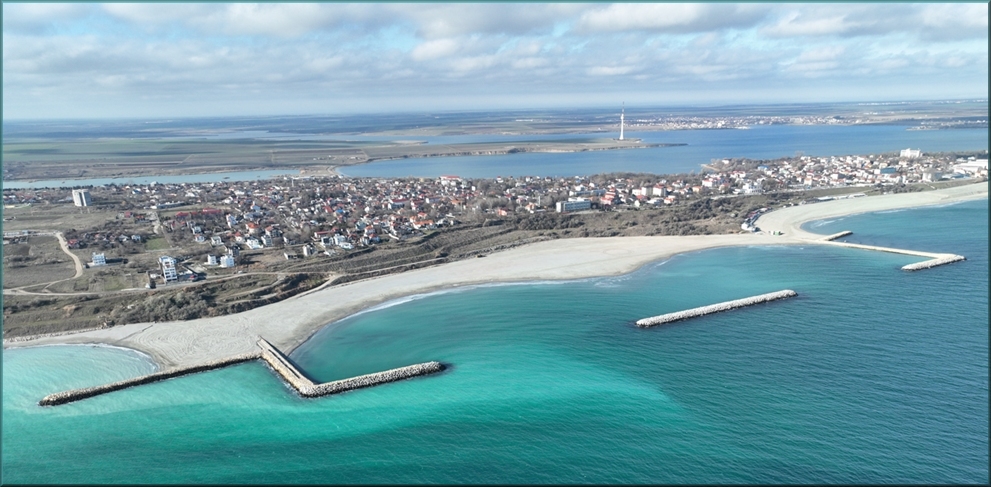
The projects complement similar projects Van Oord is undertaking in the region, such as in Euphoria. With these new projects, the total length of the Romanian coastline reinforced by Van Oord now exceeds 26 km.
Shipbuilding Sector
Portuguese Navy signs contract with Damen Shipyards for innovative Multi-Purpose Vessel
The Portuguese Navy has contracted Damen Shipyards Group to design, build and equip a state-of-the-art Multi-Purpose Vessel. The contract was signed by Admiral Jorge Pires, director of ships, and Jan-Wim Dekker, chief commercial officer of Damen Shipyards Group.
The project was preceded by a European procurement process. The ship is funded by the European Union’s Recovery and Resilience Facility (RRF), which is part of NextGenerationEU (the economic recovery package to support EU member states affected by the COVID-19 pandemic).
Damen developed this 107-meter Multi-Purpose Vessel based on the specific requirements of the Portuguese Navy. This resulted in the design of an actual multipurpose platform, primarily deployable for ocean research, search and rescue, emergency response, and maritime security and naval support operations. The ship will be able to deploy unmanned drones and helicopters for this purpose.
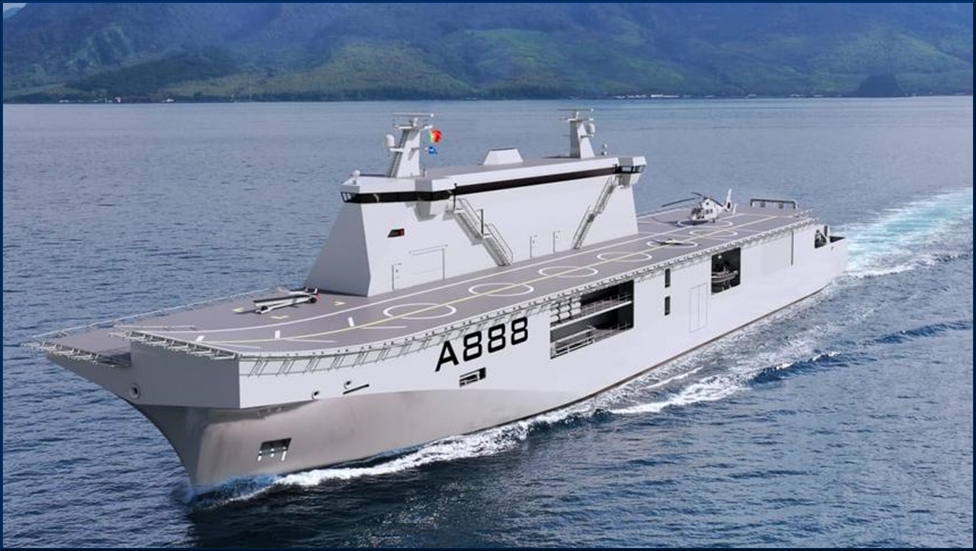
For ocean research and monitoring activities, the ship will be equipped with laboratories and accommodation for scientific personnel. For naval support, it will include the ability to launch Unmanned Underwater Vehicles (UUVs) and Unmanned Surface Vehicles (USVs) from the stern. The 94×11-meter flight deck and hangars allow helicopters and Unmanned Aerial Vehicles (UAVs) to be flown.
In addition, the vessel – classified by the Portuguese Navy as a Multi-Purpose Vessel (PNM) – will have a 650-square-meter cargo deck, where there is room for 12 20-foot containers. This allows modular systems such as hospital facilities or remolet operated vehicles (ROV) to be included.
“We are proud to have been selected to build this spectacular ship for the Portuguese Navy,” said Arnout Damen, CEO of Damen Shipyards Group, after the contract signing ceremony. “We are convinced that this ship will mark an important milestone in the naval sector. It is the first of its kind, with the most extensive capabilities to deploy all types of drones. The multipurpose nature of this ship allows the Portuguese Navy to undertake demanding missions while conducting research activities in the deepest parts of the ocean. It also underlines Damen’s close relationship with the Portuguese Navy and is a new example of cooperation in the European defense industry.”
The Portuguese Navy currently has two Damen-built ships in service. These are the 122-meter Bartolomeu Dias-class frigates NRP Bartolomeu Dias and NRP D. Francisco de Almeida. Both ships originally served in the Royal Navy (as Karel Doorman-class M frigates) before undergoing a major modernization program conducted by Damen and the Dutch Ministry of Defense’s Materiel and IT Command (COMMIT).
Damen Galati shipyard inaugurated a new robotic welding line for micropanel production
The Damen Galati shipyard inaugurated on Nov. 27 the PEMA robotic line for micropanel production, which was recently delivered and put into operation, the company reported via press release.
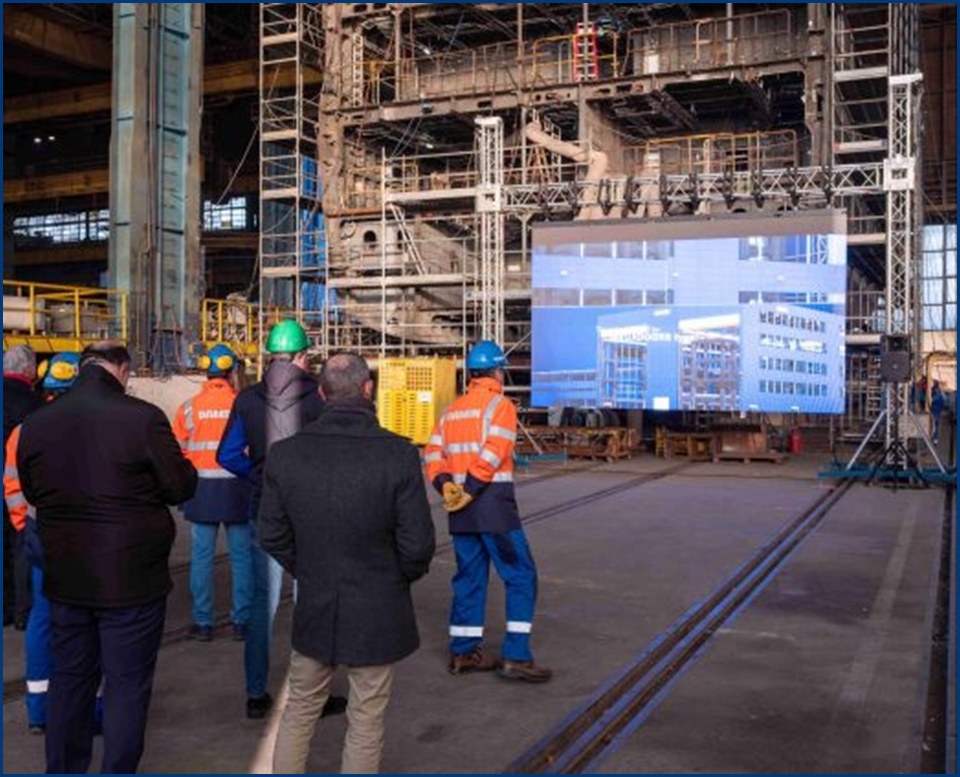
The ceremony was led by the Ambassador of the Kingdom of the Netherlands to Romania, Willemijn van Haaften.
She emphasized the fact that the Damen shipyard in Galati plays an important role in the development of the local and national business environment in the naval industry and represents a performance-oriented business model that emphasizes both technological progress and the valorization of human resources.
Damen has invested over 140 million euros in its construction site in Galati since its acquisition in 1999 until now.
The latest investment added to the Galația site consists of specific equipment for the robotic production of micropanels, an investment arising from the need to improve efficiency and ensure better quality of the welding process. The investment is designed to perform metal panels in various shapes and sizes up to a maximum of 12 x 3m and includes a PEMA Frame Assembly Station (SAM), a Robotic Welding Portal (VRWP-C), a Service Portal (SP) , as well as the chain glass platform for transporting the panels. The PEMA Micro Panel line is designed for panels and flat frames with variable stiffening directions. This work was funded by Exim Banca Românească.
About Damen Shipyards Group – Oceans of possibilities
The Damen shipyard group, founded over ninety years ago, offers global maritime solutions and provides design, construction, conversion and repair services for ships and components for the maritime industry. By integrating its systems, the Damen Group creates innovative, high-quality platforms that offer customers maximum added value.
Damen operates 35 shipyards on five continents and is supported by a global sales and service network. Damen Shipyards Group has more than 12,500 employees.
About Damen Galati Shipyard
With an area of 55 hectares and about 1,500 employees, the Damen Galati Shipyard is among the largest production units within the Dutch Damen Group.
Since its acquisition by the Damen Group in 1999, the Damen Galati shipyard has developed into a production yard with high efficiency and significant production. Expertise and a carefully managed supply chain have underpinned Damen’s major deliveries to date, fully filling the group’s diverse product portfolio. Since 1999, Damen Galati Shipyard has delivered more than 500 vessels to customers around the world (including more than 30 military vessels built for 13 different countries, including NATO and EU member states).
The company’s portfolio includes patrol vessels, offshore vessels, ferries, dredges and barges, superyachts, military vessels and tugs.
Shipbuilder Damen sets sail with electric ship that can recharge at sea
Shipbuilder Damen Shipyards will sail for the first time with a ship that can charge at sea to a wind turbine. According to the company, the vessel significantly reduces emissions during offshore wind farm maintenance.
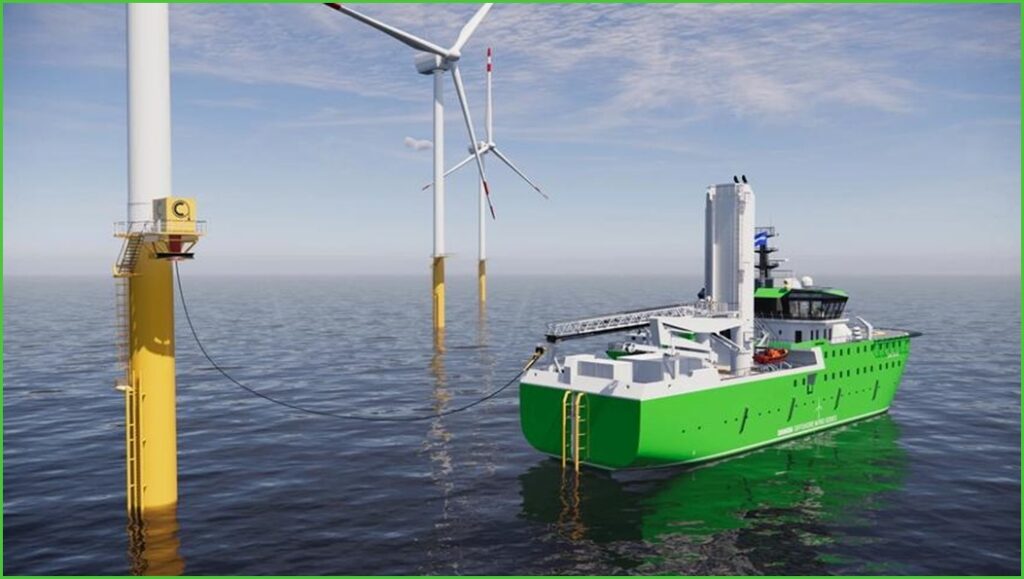
Earlier electric ships could only charge on shore, limiting the electric cruising range. The new vessel, 70 meters long and 17 meters wide, will be used to maintain wind farms. Once there, charging can be done right away.
Three years ago, Damen explored the possibility of developing an electric vessel and improving the environmental friendliness of vessel operations at offshore wind farms. The shipbuilder determined that this was technically feasible. Charging at sea would be a challenge, though.
The company partnered with MJR Power & Automation to create the system. A special plank that moves with the waves allows both personnel and the ship’s power cable to reach the wind turbine.
Damen also examined various situations to determine whether it was financially worthwhile to build such a ship. Each scenario yielded a positive return, according to the shipbuilder. Thus, maturities ranging from five to 15 years were considered and various circumstances were taken into account.
According to Damen product manager Mark Couwenberg, the ship’s launch shows that the technology to make operations at sea fully electric is there.
“However, we cannot do this alone,” Couwenberg said. To achieve this, he said, requires cooperation throughout the chain of shipbuilders, ship operators and wind farm developers.
Damen signs 30th order for NavCom equipment for their combi freighters with Radio Holland
On the second day of Europort in Rotterdam, Damen Shipyards signed the 30th order in a row for a comprehensive navigation and communications package from Radio Holland for their multipurpose cargo vessels.

“There are two main reasons why Damen chose Radio Holland,” says Joost Bloemsaat, Business Development Manager at Radio Holland. “The first is that we can supply a complete package from one brand at a favorable price, and the second reason is that Radio Holland has offices in China, where the ships are built. So we can do the commissioning of the equipment locally.”
Moreover, most of the customers operating these vessels mainly sail Northwest Europe, where Radio Holland has an extensive service network so that the equipment can be easily serviced.
Financial and Socio-Economic Developments
Romania in the top 3 EU countries with highest annual economic growth, in the third quarter of 2023
Gross domestic product remained stable in the third quarter of 2023, both in the European Union and the euro area, compared with the comparable period in 2022, after rising 0.5% in the EU and 0.6% in the euro area, between April and June 2023, according to data published Thursday by the European Statistical Office (Eurostat).
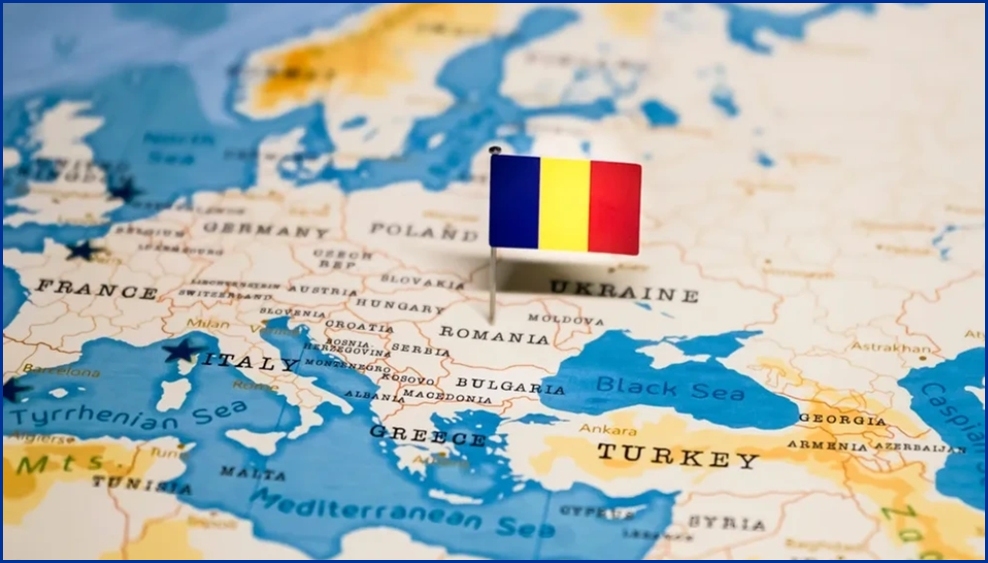
Among EU member states, the greatest progress in the third quarter of 2023 was made in Malta (7.1%), Croatia (3%) and Romania (2.9%), compared with the comparable period in 2022, and the more significant decline in Ireland (minus 5.4%) and Estonia (minus 4%),
US GDP grew 1.3% in the third quarter of 2023 compared to the previous three months, and 3% year-on-year.
Data from Eurostat show that the EU economy remained stable and that of the Eurozone contracted by 0.1% in the third quarter of 2023, compared to the previous three months, when both the EU and the Eurozone saw growth of 0.1%.
Among EU member states, the largest annual gains between July and September 2023 were recorded in Malta (2.4%), Poland (1.5%), Cyprus (1.1%), Romania and Hungary (both by 0.9%), and the largest declines occurred in Ireland (minus 1.9%), Estonia (minus 1.3%) and Finland (minus 0.9%).
Romania: There are 67,913 job openings nationwide. Through the EURES network, 154 job opportunities are offered abroad
Over 67,900 jobs are currently available nationwide, while employers from the European Economic Area (EEA) are offering 154 jobs through the Eures Romania network, reports the National Labor Office (ANOFM)
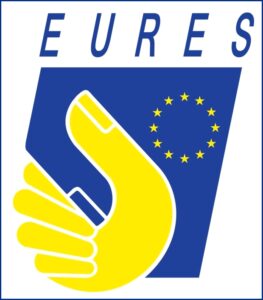
As for the centralized data for Romania, the most jobs offered are for: security guard (5,165); material handling (3,760); unskilled laborer in assembly and parts assembly (3,382); unskilled laborer in building demolition, masonry, mosaic tiles, faience, tiles, parquet (2.985); commercial worker (2,985); manual packer (2,921); courier (2,476); unskilled laborer in garment industry (1,584); unskilled laborer in breaking and cutting building materials (1,567); assistant cook (1,434) crane operator (1,021) etc.
Of the 67,913 job openings declared by employers at employment agencies, 2,601 are for people with higher education (engineer in various fields; programmer; consultant/expert/inspector/reference/economist in general economics; specialized financial accountant ; account manager, etc.), 11.684 for people with secondary or post-secondary education (commercial clerk ; cashier ; customer service representative ; data entry, validation and processing operator ; salesperson, etc.), 13,719 for people with vocational training (goods handler ; cook’s helper ; welder ; mechanical locksmith ; manufacturer assembles textile items, etc.).
The rest, of the 39,909 jobs, are for people without training or with basic/medium education (security guard; unskilled laborer for assembling parts; courier; unskilled laborer for demolishing buildings, masonry coverings, mosaic tiles, tiles, parquet and unskilled laborer in the garment industry, etc.).
According to the source cited, employers in the EEA, through the Eures Romania network, are making 154 vacancies available in the European Economic Area, most of them in Belgium – 36 jobs for: unskilled workers in agriculture; dental technician; Latvia – 30 jobs for: welder; Germany – 24 jobs for: mechatronic technician in the automotive sector (bodywork); production worker; maintenance mechanic; mechatronist; workers in production – processing of meat products.
At the same time, in Malta there are 20 jobs available for: cab driver, in Poland – 18 jobs for: construction mechanic; sales manager, in Italy – 15 jobs for: nurse, in the Netherlands – six jobs for: electrician; installer; emergency veterinarian; second captain; ship captain; mechanical engineer, and in Austria – five jobs for production technician.
People interested in jobs in the European Economic Area can check out the offer at www.anofm.ro/EURES.
Romania is on the ‘podium’ of countries with highest inflation in the European Union
The annual inflation rate in the euro area and the European Union fell significantly in October, but Romania is among the EU countries with the highest annual inflation rate, according to data published by Eurostat
In October, the annualized inflation rate in the European Union fell to 3.6% from 4.9% in September. The EU member states with the highest inflation rates were Hungary (9.6%), the Czech Republic (9.5%) and Romania (8.3%). On the other hand, the EU member states with the lowest annual inflation rates were Belgium (with negative annual inflation of minus 1.7%), the Netherlands (with negative annual inflation of minus 1%) and Denmark (with negative annual inflation of minus 0.4%).
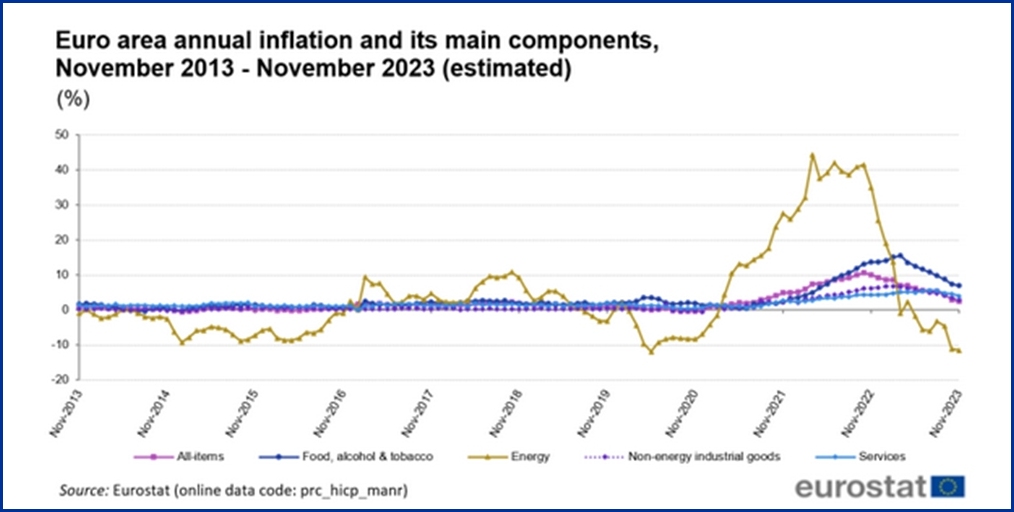
Compared to September 2023, the annual inflation rate fell from 9.2% to 8.3% in 22 member states, including Romania, and rose in five countries.
Eurostat data also showed that annual inflation in the euro area fell to 2.9% in October from 4.3% in September. For Eurozone countries, the main impact on the annual price increase came from the prices of services which registered a 1.97 percentage point increase, followed by the prices of food, alcoholic beverages and cigarettes which rose by 1.48 percentage points. In contrast, energy prices fell 1.45 percentage points.
The European Central Bank wants to keep inflation at 2% in the medium term and raised the benchmark interest rate to a record level to slow the pace of price growth, but the tightening of monetary policy also had the effect of slowing economic growth in the EU. euro area.
In the case of Romania, the National Institute of Statistics (INS) earlier revealed that annual inflation in October fell to 8.07% from 8.8% in September, while food prices rose by 8.66%, non-food prices by 6.24% and services by 12.20%.
The annual inflation rate in October 2023 compared with October 2022, calculated using the harmonized consumer price index (HICP), was 8.3%.
The National Bank of Romania (BNR) maintained its inflation forecast at 7.5% by the end of this year and raised it to 4.8% by the end of 2024, according to data presented this month by BNR Governor Mugur Isărescu. By comparison, BNR estimated inflation in August at 7.5% by the end of 2023 and 4.4% by the end of 2024.
BNR also expects annual inflation to rise to 7.7% by the end of the first quarter of 2024, and fall to 6.8% by the end of the second quarter of next year, according to the Quarterly Inflation Report, November 2023.
The number of companies newly established in Romania with foreign capital decreased by 5.1%
The number of companies newly established in Romania with foreign capital fell by 5.1% in the first nine months of 2023, compared to the comparable period in 2022, to 5,242 units, according to data centralized by the National Trade Registry Office (ONRC)

The 5,242 new companies had issued capital totaling $116.083 million, an increase of nearly four times compared with the issued capital of companies registered in the January-September 2022 period of $31.027 million,
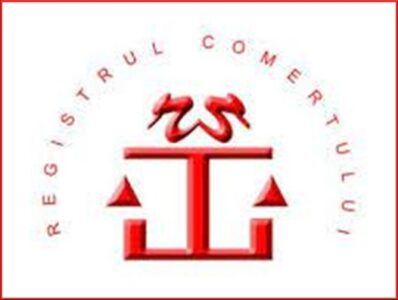 In September 2023, 605 new companies with foreign equity participation were registered. Depending on areas of activity, most registrations were recorded in wholesale and retail trade, auto and motor repair (28.1%), professional, administrative, scientific and technical activities (18.51% of the total), transportation, warehousing and communications (15.54%). %) and construction (12.23%).
In September 2023, 605 new companies with foreign equity participation were registered. Depending on areas of activity, most registrations were recorded in wholesale and retail trade, auto and motor repair (28.1%), professional, administrative, scientific and technical activities (18.51% of the total), transportation, warehousing and communications (15.54%). %) and construction (12.23%).
At the end of September 2023, there were 249,457 companies with foreign equity participation in Romania. The value of the issued capital was nearly $69 billion.
The highest number of companies with foreign participation was among investors from Italy, 52,524 (issued capital of $4.053 billion), respectively, but the highest value of social capital belongs to Dutch companies, $12.863 billion, respectively, in 6,039 companies.
Geopolitical developments
Proponents of abolishing votum in European Union noticeably increasing
Recently, the president of the European Parliament took the position that the vote allowing one country to block a European decision of the other EU member states.
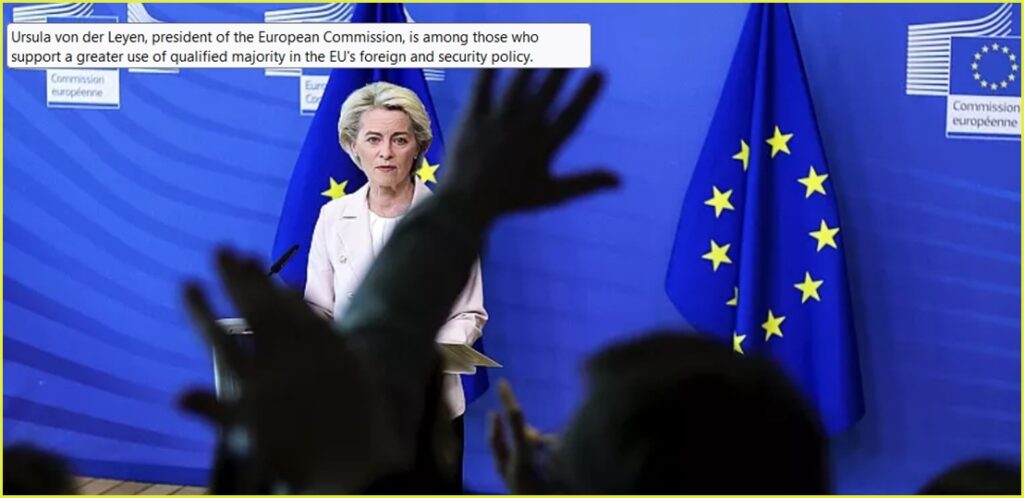
That would then have to be replaced by a qualified majority vote and that means, in short, that a qualified majority is achieved if 2 conditions are met simultaneously:
- 55% of member states vote in favor – in practice that means: 15 out of 27
- The proposal is supported by member states representing at least 65% of the total EU population
This procedure is also called the “double majority rule.”
It prevents sometimes one country from holding the decision-making of the others hostage. Furthermore, abuse of the vote will have to be avoided and should be limited to the draft decision before us and not misuse it to “use it as a bargaining chip.”
This promotes democratic decision-making and unity within the European Union. Examples are numerous where the abuse takes place such as in Austria, Poland and Hungary.
Starting this month and next year, numerous elections will take place or have recently taken place in Europe. Its results have caused a lot of turmoil and unrest internationally and people link it to international right-wing extremism such as, for example, from Le Pen in France, the German AfD, AUR in Romania or even Trump and his cronies.
Every EU member state knows that Romania and Bulgaria have the right to join on their side
Romania, in particular, took the royal path of diplomacy, and Bulgaria followed them.
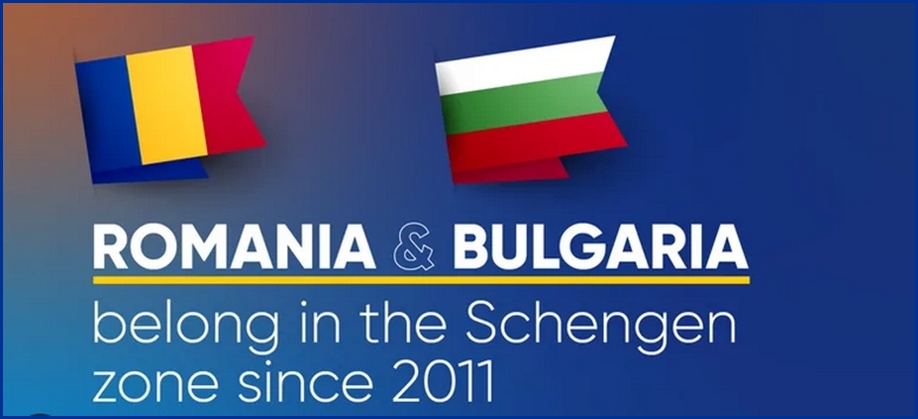
However, even their patience is finite and if, unexpectedly, they still cannot join, it will be taken to the European Court of Justice and then countries such as Austria and the Netherlands will be called to account and will have to realize that erosion of political credibility can cause damage internationally.
Special Messages
Special corporate gift
Wake up, Romanians! Commemorative piece ennobled with pure gold at an unbeatable price.
The official commemorative song “Wake up, Romanians!” is a tribute to our national anthem, a symbol of the courage, pride and freedom of the Romanian people. Only at Casa de Monede Romania can you now purchase this highly prized limited edition, refined with pure gold, at an unbeatable price and in addition the elegant album
The text of Romania’s current national anthem was composed in 1848 by Andrei Mureșanu, a Romantic poet, journalist and translator, a prominent personality of the 1848 revolution. The music, on the other hand, was composed by Anton Pann, a poet and ethnographer, man of great culture, singer and author of music books. At the time, the poem was called “Un rusunet.” From 1848, “Wake up, Romanians!” was a song that was very dear to Romanians because of its message of patriotism and freedom. It was sung on the occasion of every conflict in Romania and instilled courage at crucial moments in history, such as the War of Independence, World War I and World War II. The first recording of the song was made on disc in the US in 1900, performed by the soloist Alexandru Pascu. Only in 1910 did the choir “Ion Vidu” from Lugoj record the choral version on disc for the first time, and since 1990 the national anthem of Romania has been “Wake up, Romanians!”

“We are very proud of the fact that our company, Casa de Monede România, can exclusively offer Romanian customers an official coin, ennobled with pure gold, dedicated to the Romanian national anthem, a solemn song that inspires Romanians with courage at crucial moments of history. The unbeatable price of only 49 Lei gives everyone access to this beautiful artistic gem. In addition, each collector will receive an elegant collector’s album as a gift from us,” explained Libor Veselý, director of Casa de Monede Romania, a member of the Coinage Group, which represents world-renowned mints in various markets in Europe.
The front of our tribute features dancers in traditional costumes, and in the background are the musical notes of our beloved song “Wake Up, Romanians!”. This exclusive piece celebrates courage, pride and freedom, qualities of the Romanian people that are reflected in the anthem itself.
Disclaimer

The newsletter of the Dutch Romanian Network is compiled with great care. The Dutch Romanian Network cannot accept any liability for a possible inaccuracy and/or incompleteness of the information provided herein, nor can any rights be derived from the content of the newsletter. The articles do not necessarily reflect the opinion of the board.
